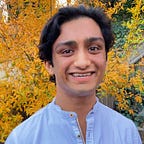Bits&Bio Log: Week 2/3 Textbook Readings (Retroactive Post)
These weeks, I finished parts 1 and 2 in Voet and Voet, the first three segments of the Khan Academy series, and the first 5 chapters in the Klein book. The OChem basics covered there are making sense to me now, but some of the details of isomerism and a lot of the details regarding functional groups in Voet and Voet I am struggling with.
As you can see I wasn’t great about note-taking on my laptop these first weeks, most of it is on print-outs and paper, which I don’t want to transcribe so I can push forward with learning new topics. I still hope some of the questions and resources are useful though.
Resources
Biochemistry by Voet and Voet (4th edition virtual, ordered 2nd edition in the meantime from the awesome resource AbeBooks: 2nd edition, 4th edition, and the 2nd edition was less than 12 dollars with shipping when I ordered!)
David Klein, Organic Chemistry As a Second Language: First Semester Topics, 4th Edition
Khan Academy: Organic Chemistry
Questions
Why does orbital probability distribution overlap cause a bond. Why can’t they be attracted close enough from far away (like at the same distance as a higher energy level electron). Because something about full valence shells is a more stable configuration. Why??? More electrons=more energy=>less stable right?
About 500 naturally occurring amino acids are known as of 1983 (though only 20 appear in the genetic code) and can be classified in many ways. (from amino acid wikipedia)
Notes
ATP is a “nucleoside triphosphate”, which are derivatives of the same nucleotides that make up DNA. Given the diversity of all life from relatively simple building blocks, this may not be saying much though.
Some nucleotides also serve as intracellular messengers to regulate metabolic pathways.
DNA and polypeptides as linear polymers
Proteins fold largely in response to the hydro -philic/-phobic reactions of their side chains
Tyrosine phenolic group with the Tryptophan and phenylalanine aromatic groups account for much of UV absorbance and fluorescence by proteins.
Cysteines have thiol groups that form disulphide bonds with each other that can be used to link together multiple polypeptides through an oxidation reaction (as well as cross-link cysteines in the same chain).
Enantiomers are molecules whose mirror images are non-superimposable.
Pending Leads
Tracking down derivations for the four equations in England’s article
What have been the major technological/tooling breakthroughs in biotechnology? (related to this, when did the field really start?)
